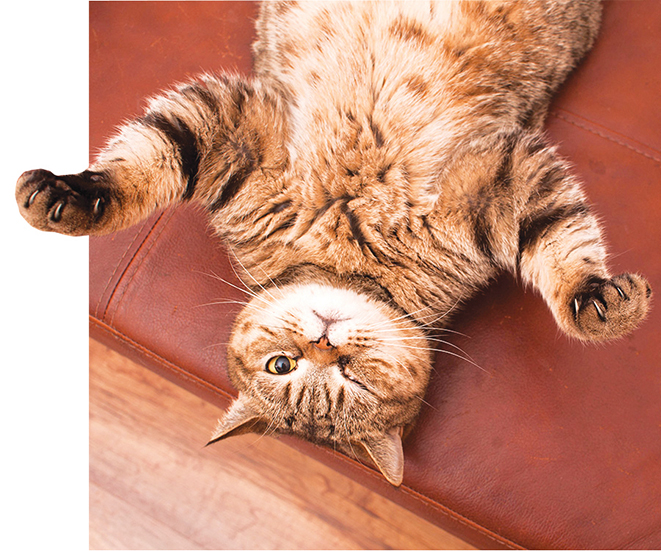By Kellie Tickner, Orchard Hills Veterinary Hospital Administrator
Decoding your cat’s body language is a fascinating and essential skill for every cat owner. Our feline friends use a unique blend of body movements and vocalisations to express their feelings and needs. By learning to interpret these signals, you can better understand and fulfill your cat’s desires and ensure their well-being.
When deciphering cat body language, it’s crucial to consider the context. Pay attention to the environment and what might be affecting your cat’s emotions. For instance, a cat cornered by a person might feel scared or threatened, while a seemingly upset cat with no apparent cause might be experiencing pain or illness. Each cat is unique, and their signals can vary slightly based on their personality and past experiences.
Tail Signals: The tail is one of the most expressive parts of a cat’s body. A high, upright tail often signals that your cat is feeling confident and friendly. If the tail is quivering, it’s a sign of excitement or greeting. Conversely, a low or tucked tail can indicate fear or submission. A puffed-up tail typically means the cat is startled or feels threatened, while a swishing or twitching tail often signals irritation or agitation.
Ear Positions: Ears are another clear indicator of a cat’s emotions. Forward-facing ears suggest curiosity and attentiveness, while ears that are flattened against the head may indicate fear, aggression, or extreme annoyance. Ears that rotate backward and sideways, often referred to as “airplane ears,” can signal that your cat is feeling threatened or ready to defend itself.
Eye Movements: Cats’ eyes convey a lot about their emotional state. Slow blinking is a sign of trust and affection; it’s a cat’s way of showing that they feel safe and comfortable around you. Direct, unblinking stares, however, can be a sign of dominance or aggression. Dilated pupils can indicate excitement or fear, depending on the context, whilst constricted pupils may signal anger or intense focus.
Body Posture: A relaxed cat will lie on its side or back, with its belly exposed, indicating trust and contentment. A cat that crouches low to the ground with tense muscles is likely scared or preparing to defend itself. Arching the back, combined with fur standing on end, is a defensive posture intended to make the cat appear larger and more threatening to potential dangers.
Vocalisations: Cats also use a variety of sounds to communicate. A gentle purr often signifies contentment, though cats may also purr when they are in pain or anxious as a self-soothing mechanism. Meowing is typically directed at humans and can mean anything from a greeting to a demand for food or attention. Hissing, growling, or yowling are clear signs of distress, fear, or aggression.
By paying close attention to these non-verbal cues, you can enhance your communication with your cat, ensuring they feel understood and secure. This deeper understanding can help prevent misunderstandings and create a more harmonious relationship between you and your feline companion.
For assistance with your pets, please phone our friendly team at Orchard Hills Veterinary Hospital on (02) 4736 2027.






